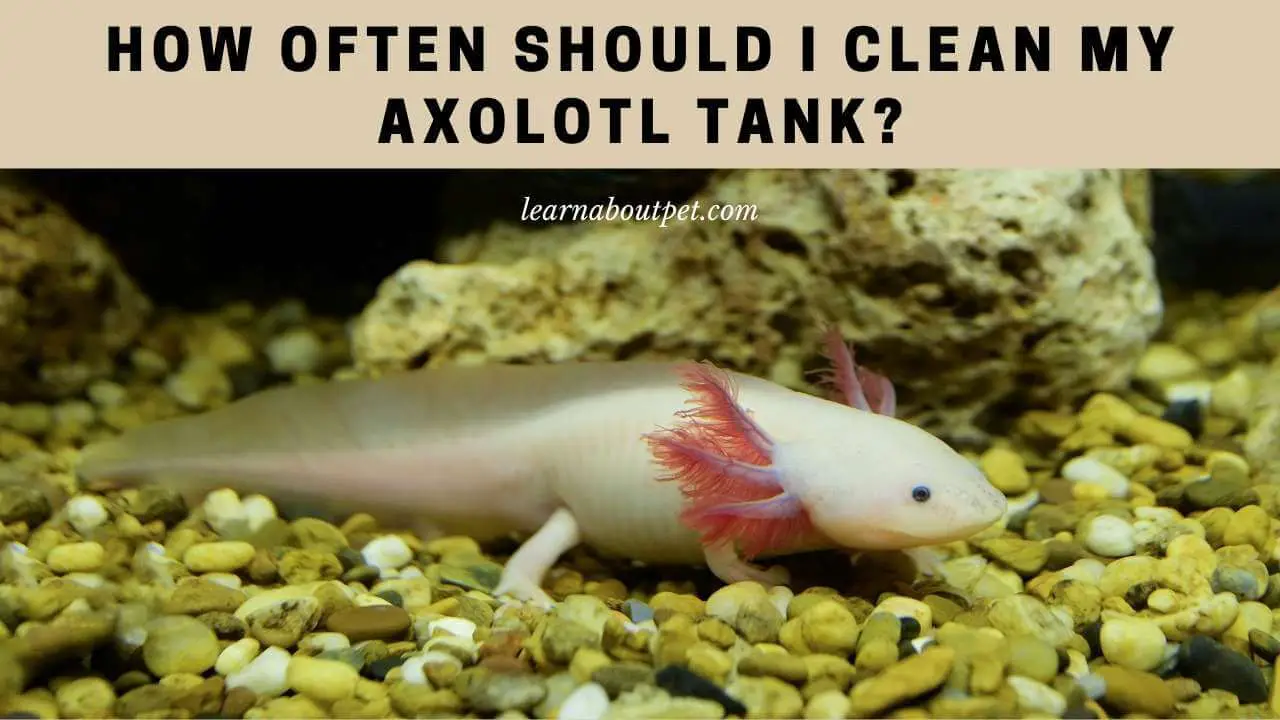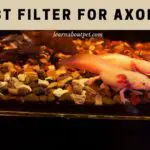Axolotls are neat, so, when you bring them to your home, let them feel at home. They are easy to maintain, and when you keep them in the right environment, you can cherish them for 15 years. Apart from offering the right diet, good habitat is needed for their health. If you rear them in tanks, you should clean the tanks because dirty water can cause bacterial infections.
How often should I clean my axolotl tank? It depends on five factors: the filter strength, tank’s size, feeding, age and size of your axolotls, and the number of axolotls. Clean your tanks daily with a Turkey baster to remove food and poop. Do a 20 percent water change weekly and clean the glass once in a month with a magnet cleaner.

I took time to write some content you shouldn’t miss when it comes to cleaning your pet’s home. And with such a critically endangered pet, it would be great to have out-of-the-ordinary information that can help you give your treasure a momentous life. Let’s get started with how often should I clean my axolotl tank.
How Often Should I Clean My Axolotl Tank?
How often should I clean my axolotk tank? Vets usually advise within a fortnight but it can be more frequent. If you have more axolotls in your tank, the more the waste and the more frequent you should change your water.
For example, only keep two adult axolotls in a 10-gallon tank. You need to remove any uneaten food and poop daily. Axolotls’ waste builds up ammonia while rotting food remains contain nitrates which break into nitrites and are harmful to axies.
Changing the water often(particularly once every week) removes 90% of Nitrate, Nitrite, and Ammonia. So, the concentration of these chemicals will hardly reach levels that can be harmful.
If you do small tank water changes, then we recommend the above pattern, but suppose you have big water tanks? Cleaning can be warying, but, don’t panic yet, we have some ideas here. To help you figure out when to change the water, consider these 5 factors:
- The filter strength
- Tank’s size
- Feeding
- Age and size of your axolotls
- Number of axolotls
If you have fewer axolotls and rear them in large tanks, there is less concentration and enough aeration, and if your filter works fine, you can change the water after a longer duration of between one to a few months.
But if you don’t change the water, its pH and KH will drop (more acidic) as nitrate levels rise and your axolotls might suffer from Old Tank Syndrome. If that happens, the pets can die and you’ll need to make a freshwater change if you plan to rear again.
How Often Should I Change The Water In My Axolotl Tank?
It depends on five factors: size and age of axolotls, tank size, feeding, filler strength, and the number of axolotls. Vets recommend once every fortnight for small tanks.
Although the tank’s water might look clear, waste and food particles are present and need to be taken away. These wastes build up to form nitrate and phosphate chemical compounds.
How Do I Change The Water In My Axolotl Tank?
First, it is recommended to have your water tested by PetSmart (just take a liter of water in your tank to PetSmart). If you can, buy a Water Testing Kit, ask your vet to teach you how to test the water. It is easy, so I suppose you’ll not have a hard time.
Next, you need to determine if you’re doing a spot cleaning (removing muck off the decor and bottom) or changing the water normally. This will depend on the condition of the water in the tank and the five factors discussed above. Whatever you choose, these are the steps.
- Remove the poop and dirt using a turkey master.
- Use a big net to hold your axolotl as you take them out of the tank to another tank so that they can’t jump
- Siphon the water (using a half an inch diameter hose pipe) in the tank to another container. If the tank is a small one, you can drain the water to another ground/container comfortably
- When filling your container, ensure the eater is free from soap, chemicals, or any other contamination.
- Clean the tank with a cloth to remove any stuck materials in the bottom. Use a 5-gallon bucket to fill the tank, or purchase a water-filling hose pipe.
- Transfer your axolotls to the freshwater in the tank.
If you still can’t manage to clean the tank yourself, consider getting a ghost shrimp to scavenge the visible remains in the tank. At least two can keep your tank clean, plus they’re a snack to your pet.
How Often Should An Axolotl Poop?
It depends on some factors like, the frequency and volume of food that you feed your axolotl, health status and diet as well as the water temperature.
As you know, axolotls have a great deal of appetite, so expect them to poop more, in fact, more than dogs. How often should I clean my axolotl tank? You should notice how frequently axolotls poop and clean them before they even start to pile up. So, you can even clean at least twice a day.
Do axolotls eat their poop? Young axolotls can eat their poop. You need a turkey buster to clean the pool because apart from being eaten, they can be toxic when bacteria act on them to form nitrates.
That said, you should feed your baby axolotls every day so that they don’t eat their poop. You do not have to feed older axolotls daily.
We have just discussed how often should I clean my axolotl tank, you should get ready to learn more.
How Do I Clean An Axolotl Tank?
How often should I clean my axolotl tank; and how do I do it? For filtered tanks, doing a 20 percent water change weekly, using a turkey buster to scoop food remains and poop daily is a good way to go.
To clean the tank you’ll need:
- Siphon pipe/aquarium vacuum hose
- Clean water
- 2 buckets
To clean the tanks, you’ll need to siphon some tank water into the buckets. You should estimate what 25 percent of water is depending on your tanks. The procedure is the same as that of changing water illustrated above, but, please note that you should never change all the water, only change up to 25 percent.
If you don’t use a filter, you’ll have to change 20 percent of the water every day. Filters are necessary for healthy environments and should be used in all your tanks.
When doing spot cleaning, leave no particles or remains in the tank. You can use a gravel siphon to remove other food particles that your filter missed.
If you can’t clean your tank within two weeks, get some feeder fish such as shrimps, and guppies, to eat the remains. This is a cool way to maintain clear water in your tank. However, you shouldn’t stop changing the water; but you can maintain a 10 percent water change instead of the usual 20.
To make cleaning easier, avoid throwing foods that axolotls have no appetite for. Moreover, some foods decompose easily, for example, beef, heart, and liver. Some foods will never be consumed and can cause physical injury like skeletons, meat with bones.

Final Verdict On How Often Should I Clean My Axolotl Tank
How often should I clean my axolotl tank? It is recommended once every 2 weeks, but it depends on the five factors: the filter strength, tank’s size, feeding, age and size of your axolotls, and the number of axolotls. Water change helps to lower the concentration of chemicals produced by wastes such as axies urine and food remains.
Doing water changes regularly will also extend your axolotl life and maintain good health.

Welcome to Learn About Pet. My name is Rajkumar Ravichandran and I love all pets, travel, and amazing food. I write about my passion and personal experience caring for multiple pets in this blog! ❤️
Post Disclaimer
DISCLAIMER: THIS BLOG OR WEBSITE, "Learn About Pet", DOES NOT PROVIDE YOU WITH MEDICAL ADVICE AND IS NOT A SUBSTITUTE FOR MEDICAL ADVICE. ALWAYS GET IN TOUCH WITH YOUR PERSONAL VETERINARIAN AND USE INFORMATION HERE AS GENERAL ADVICE.
The information, including but not limited to, text, graphics, images and other material contained on this website are for informational purposes only. No material on this site is intended to be a substitute for professional veterinary advice, food recommendation, diagnosis, or treatment. Always seek the advice of your veterinarian or other qualified health care provider with any questions you may have regarding a medical condition or for pet food related questions.







